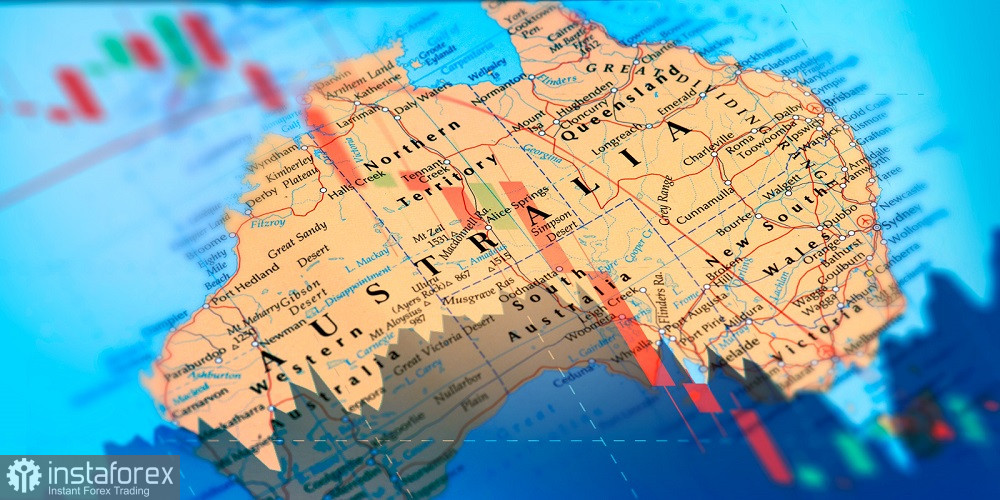The AUD/USD currency pair is demonstrating a corrective rise following an impulsive decline observed last week (the low was fixed at the 0.6290 mark). The pair has been rising for the second consecutive day, paying no attention to the conflicting dynamics of the greenback.
The U.S. Dollar Index this week has been unable to determine the direction of its movement. Yesterday's drop to the 105.97 level was replaced by today's rise (the index has already marked 106.24). However, the Aussie is ignoring these fluctuations, trying to develop an upward blitzkrieg. This indicates that the AUD/USD pair is rising not only due to the indecisiveness of the dollar bulls but also due to the strengthening of the Australian dollar. This assumption is supported by the dynamics of major cross pairs involving the Australian dollar, specifically AUD/NZD and AUD/JPY.
The minutes of the October meeting of the Reserve Bank of Australia (RBA), published today, provided additional support for the Aussie. The key theses of the document had a hawkish character, allowing AUD/USD buyers to organize another counterattack.

Recall that following its last meeting, the Reserve Bank disappointed the Australian dollar. While most market participants were confident that the RBA would keep the interest rate unchanged (which proved correct), they also expected the central bank to adopt a more hawkish stance in response to the inflation increase in August. However, this did not happen: the RBA did not change the wording of its accompanying statement, and newly appointed Reserve Bank Governor Michele Bullock maintained a cautious tone in her comments.
Given this disposition, it was difficult to anticipate that the minutes of the October meeting would support the Aussie. Nothing extraordinary was expected from today's release.
However, the document did present a somewhat hawkish surprise. At least its tone was "somewhat" tougher than the accompanying statement. In particular, the central bank reported that during the October meeting, the members of the Council considered two scenarios: a 25 bps interest rate hike and keeping it unchanged. Although the scale tilted in favor of the latter, RBA representatives acknowledged that the upward risks to inflation were a "serious concern."
Here, it's worth noting that according to the latest data, the consumer price index in August rose quite sharply, reaching 5.2%. For comparison, in April of this year, the figure stood at 6.7%, but after a few months of decline, it dropped to 4.9%. Then the CPI started rising again. The report's structure indicates that the most significant price increase occurred in the housing sector (+6.6%), insurance and financial services (+8.8%), transportation (+7.4%), and food and non-alcoholic beverages (+4.4%).
In the minutes of the October meeting, RBA members indicated that they are considering another round of interest rate hikes in the foreseeable future. According to their statements, further tightening may be necessary "if inflation proves to be more persistent than expected." Two phrases quoted in the document should be noted. Firstly, there is a phrase about the progress in reducing inflation, especially in the services sector, having significantly slowed. The second phrase complements the first, stating that the Board has a "low tolerance for a slower return of inflation to the target level."
All of this suggests that the members of the regulatory body are prepared for further tightening of monetary policy. The August inflation disappointed the RBA, but to make a comprehensive decision, September and quarterly data are required, and they will only be published on October 25. The minutes contains corresponding hints. It is mentioned that, despite the more compelling arguments in favor of keeping the rate in October, more comprehensive data on inflation and employment will be presented at the November meeting. The central bank will also disclose updated macroeconomic forecasts.
Therefore, the Reserve Bank of Australia may resort to an additional interest rate hike next month, but the decision will be based, in part, on the data to be published at the end of October. If the consumer price index reflects an acceleration in inflation in September, especially in the third quarter, the chances of a 25 bps rate hike in November will significantly increase.
From a technical perspective, the AUD/USD pair is currently testing the resistance level at 0.6370, which corresponds to the Tenkan-sen line on the D1 timeframe. Considering long positions is advisable only after buyers establish themselves above this target. In such a scenario, the next targets for the upward movement will be the 0.6400 mark (the Kijun-sen line) and 0.6450 (the lower Kumo cloud line on the same timeframe).





















